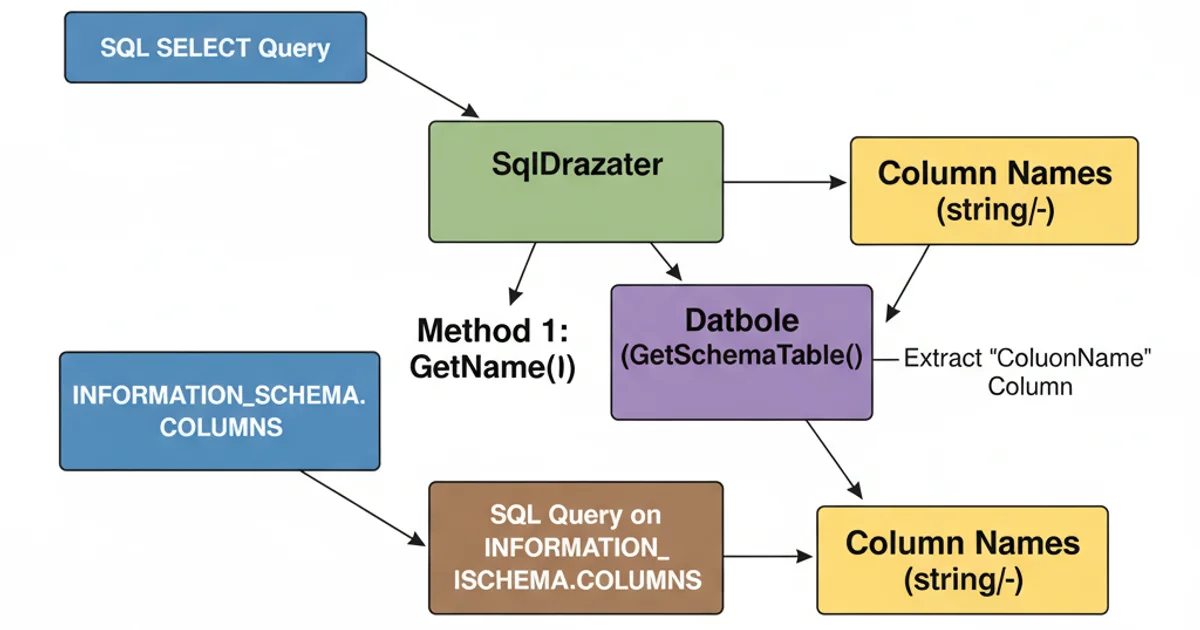What is the difference between a decision boundary and a hyperplane?
Categories:
Decision Boundary vs. Hyperplane: Unpacking Key Concepts in Machine Learning

Explore the fundamental differences and relationships between decision boundaries and hyperplanes, crucial concepts for understanding classification algorithms like SVMs.
In the realm of machine learning, particularly within classification tasks, terms like 'decision boundary' and 'hyperplane' are frequently encountered. While often used interchangeably in casual conversation, they represent distinct yet related concepts. Understanding their precise definitions and how they interact is vital for grasping the mechanics of algorithms such as Support Vector Machines (SVMs) and other linear classifiers. This article will demystify these terms, illustrate their roles, and highlight their key differences.
What is a Hyperplane?
A hyperplane is a fundamental geometric concept that generalizes the idea of a line or a plane to higher dimensions. In an N-dimensional space, a hyperplane is a flat, N-1 dimensional subspace that divides the space into two disconnected parts.
- In 2D space: A hyperplane is a line.
- In 3D space: A hyperplane is a plane.
- In N-dimensional space: A hyperplane is an (N-1)-dimensional flat subspace.
Mathematically, a hyperplane can be represented by the equation w ⋅ x - b = 0, where w is a normal vector to the hyperplane, x is a point on the hyperplane, and b is a bias term. The vector w determines the orientation of the hyperplane, and b determines its offset from the origin.
graph TD
A[N-Dimensional Space] --> B{Hyperplane (N-1 Dimensions)}
B --> C[Divides Space]
C --> D[Region 1]
C --> E[Region 2]
B -- "Equation: w ⋅ x - b = 0" --> F[Mathematical Representation]Conceptual representation of a hyperplane in N-dimensional space.
What is a Decision Boundary?
A decision boundary is a surface that separates different classes in a classification problem. It's the region in the feature space where the predicted class of a data point changes. In simpler terms, if you cross the decision boundary, your classifier will assign a different label to the data point.
Decision boundaries can take various forms:
- Linear: A straight line (2D), a flat plane (3D), or a hyperplane (higher dimensions).
- Non-linear: Curved lines, complex surfaces, or intricate regions, often resulting from non-linear models or kernel tricks (e.g., in SVMs with RBF kernels).
The goal of a classification algorithm is to learn an optimal decision boundary that best separates the classes in the training data, allowing for accurate predictions on unseen data.

An example of a non-linear decision boundary separating two classes.
The Relationship and Key Differences
The relationship between a decision boundary and a hyperplane is one of specificity. A hyperplane is a type of decision boundary, specifically a linear one. All hyperplanes are decision boundaries, but not all decision boundaries are hyperplanes.
Here's a breakdown of their key differences:
- Generality: A decision boundary is a general concept for any surface that separates classes. A hyperplane is a specific geometric object (a flat, linear separator).
- Form: Decision boundaries can be linear or non-linear. Hyperplanes are strictly linear.
- Context: Hyperplanes are fundamental to linear models (like linear SVMs, logistic regression). Decision boundaries are a concept applicable to all classification models, whether linear or non-linear.
Consider a Support Vector Machine (SVM). A linear SVM finds the optimal hyperplane that maximizes the margin between classes. In this case, the decision boundary is a hyperplane. However, if you use an SVM with a non-linear kernel (e.g., a Radial Basis Function kernel), the SVM maps the data into a higher-dimensional space where a linear hyperplane can separate the classes. When this hyperplane is projected back into the original feature space, it often appears as a non-linear decision boundary.
flowchart TD
A[Decision Boundary] --> B{Linear?}
B -- Yes --> C[Hyperplane]
B -- No --> D[Non-Linear Boundary]
C --> E[Example: Linear SVM]
D --> F[Example: SVM with RBF Kernel (in original space)]
A -- "Separates Classes" --> G[Classification Goal]Relationship between decision boundaries and hyperplanes.
Practical Implications in Machine Learning
Understanding this distinction is crucial for several reasons:
- Model Selection: If your data is linearly separable, a linear model (which uses a hyperplane as its decision boundary) might suffice. If not, you'll need models capable of learning non-linear decision boundaries.
- Interpretability: Linear decision boundaries (hyperplanes) are generally easier to interpret. The coefficients of the
wvector can indicate the importance of different features. - Kernel Trick: The kernel trick in SVMs leverages the concept of hyperplanes. It allows a linear classifier to find a hyperplane in a high-dimensional feature space, which corresponds to a non-linear decision boundary in the original input space, without explicitly computing the high-dimensional mapping.
import numpy as np
import matplotlib.pyplot as plt
from sklearn import svm
# Generate some linearly separable data
X = np.array([[1, 1], [2, 2], [1, 2], [2, 1], [3, 3], [0, 0]])
y = np.array([0, 0, 0, 0, 1, 1])
# Train a Linear SVM
clf = svm.SVC(kernel='linear', C=1000)
clf.fit(X, y)
# Get the separating hyperplane (decision boundary)
w = clf.coef_[0]
a = -w[0] / w[1]
xx = np.linspace(-1, 4)
yy = a * xx - (clf.intercept_[0]) / w[1]
# Plot the data and the hyperplane
plt.figure(figsize=(8, 6))
plt.plot(xx, yy, 'k-', label='Decision Boundary (Hyperplane)')
plt.scatter(X[:, 0], X[:, 1], c=y, cmap=plt.cm.Paired, edgecolors='k')
plt.xlabel('Feature 1')
plt.ylabel('Feature 2')
plt.title('Linear SVM: Decision Boundary is a Hyperplane')
plt.legend()
plt.grid(True)
plt.show()
Python code demonstrating a linear SVM creating a hyperplane as its decision boundary.